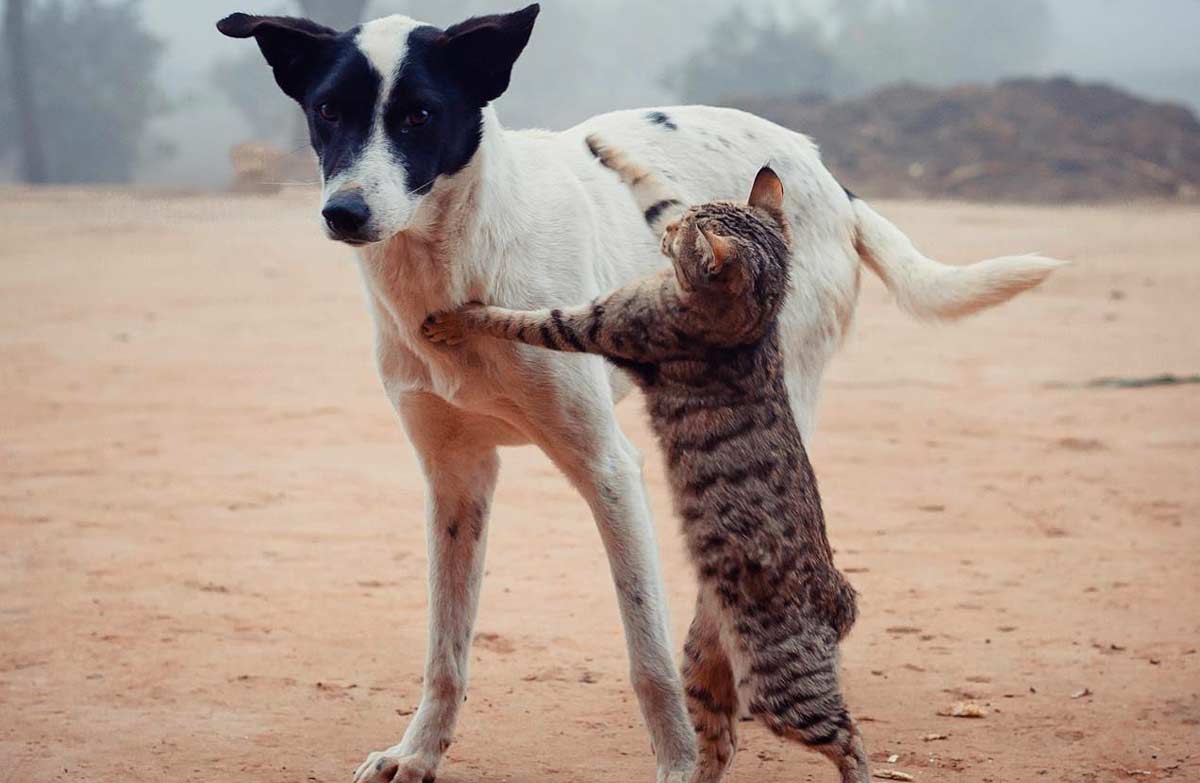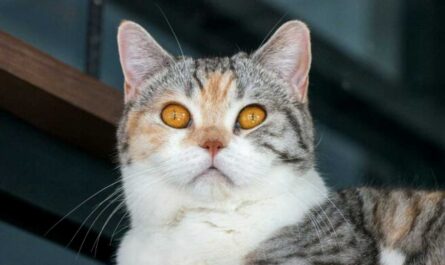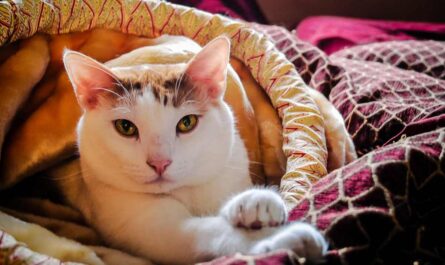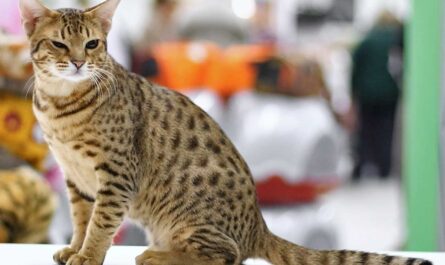How to tell if your cat can’t smell? You place a plate of steaming tuna, its aroma guaranteed to awaken any feline appetite, in front of your beloved cat. But instead of the usual excited meow and a flurry of furry paws, your cat seems completely oblivious. They might brush past the plate, seemingly unfazed by the enticing fragrance.
This scenario, while potentially amusing, could be a cause for concern. A cat’s sense of smell is an incredibly powerful tool, as crucial to their world as our sense of sight is to ours. It’s how they navigate their environment, identify food sources, communicate with other cats, and even form emotional bonds. So, if your feline friend seems less interested in the world of enticing smells, it’s worth investigating whether they might be experiencing a loss of smell, also known as anosmia.
This comprehensive guide will equip you with the knowledge to recognize and address anosmia in your cat. We’ll delve into the fascinating world of feline olfaction, exploring the significance of smell in a cat’s life. We’ll then investigate the various factors that can contribute to anosmia, discuss the signs and symptoms to watch out for, and shed light on diagnostic methods available at the veterinarian’s clinic. Finally, we’ll explore potential treatment options and offer tips on managing your cat’s life if they are diagnosed with anosmia.
By understanding the importance of smell in your cat’s world and the signs of potential loss, you can ensure they continue to live a happy and enriched life, even if their sense of smell is diminished.
The Fragrant World of Felines: Why Smell Matters
Our feline companions may seem aloof at times, but their noses are constantly working overtime, painting a rich olfactory picture of the world around them. While we rely primarily on sight to navigate and understand our surroundings, a cat’s sense of smell plays a much more prominent role in their daily lives. It’s a superpower that goes far beyond simply identifying a tasty meal. Let’s delve into the fascinating world of feline olfaction and discover why a good sense of smell is essential for our whiskered friends.
Beyond the Dinner Bowl: A Multi-Sensory Experience
Food may be a top priority for any cat, but their amazing sense of smell extends far beyond the realm of delectable dishes. It acts as a powerful sensory tool that shapes their entire world. Imagine your cat weaving through the house, not just seeing furniture and walls, but also encountering a map of fascinating scents.
-
Navigational Prowess: Like a furry explorer, your cat uses scent trails to navigate their environment. Familiar scents provide a sense of security and help them orient themselves, particularly in new or unfamiliar spaces. Think of it like a cat’s personal GPS, with enticing aromas guiding them towards cozy napping spots or their favorite scratching post.
-
Olfactory Detectives: Those curious little noses aren’t just sniffing out treats! Cats can detect even the faintest odors, acting as detectives in their own little world. They can identify objects they’ve encountered before, from your favorite pair of shoes to a hidden stash of catnip. This incredible sense of smell also helps them locate their litter box, ensuring they can go about their bathroom business without any mishaps.
-
The Silent Language of Scent: In the social world of cats, communication goes beyond playful swats and rumbling purrs. Pheromones, chemical messengers carried through scent, allow cats to communicate a wealth of information. Scent marking with urine or rubbing their bodies on furniture is a way of claiming territory, sending messages to other cats, and even expressing emotions like calmness or anxiety.
-
The Thrill of the Hunt: A cat’s keen sense of smell is a vital part of their hunting instincts. They can detect the faintest whiff of prey, even if it’s hidden from sight. This incredible olfactory ability allows them to hone in on their target, making them skilled predators, even in low-light conditions.
So, the next time you see your cat with their nose twitching and sniffing the air intently, remember, they’re not just being nosy (although that might be part of it!). They’re actively taking in a wealth of information, building a fragrant map of their world and communicating with their fellow felines in a silent language only they can understand.
A Spectrum of Loss: Understanding Reduced or Absent Smell in Cats
Our feline companions navigate the world through a kaleidoscope of senses, with smell playing a vital role in their daily lives. From identifying food to recognizing familiar scents, a cat’s sense of smell is intricately linked to their behavior and well-being. But what happens when this crucial sense weakens or disappears altogether? This section explores anosmia in cats, delving into the different ways a cat’s sense of smell can be affected.
Shades of Gray: Partial Anosmia vs. Complete Loss
Anosmia is the technical term for the loss of smell. However, it’s important to understand that this condition can exist on a spectrum. Here, we’ll differentiate between partial anosmia and complete anosmia:
-
Partial Anosmia (Hyposmia): In this scenario, a cat’s sense of smell is diminished, but not entirely absent. They may struggle to detect subtle scents or familiar odors that were once easily recognizable. Imagine it like turning down the volume on your sense of smell – things aren’t completely silent, but they’ re definitely quieter.
-
Complete Anosmia: As the name suggests, complete anosmia refers to the complete absence of a sense of smell. In this case, a cat wouldn’t be able to detect any odors at all. Their world would be devoid of the rich tapestry of scents that most cats rely on to navigate their environment.
It’s important to note that differentiating between partial and complete anosmia can be challenging for pet owners. Changes in behavior, however, can offer clues. A cat with partial anosmia might show less interest in food with a diminished scent, while a cat with complete anosmia might lose interest in food altogether.
A Temporary Blip or a Long-Term Change: Temporary vs. Chronic Anosmia
Anosmia can also be categorized as temporary or chronic:
-
Temporary Anosmia: Sometimes, a loss of smell in cats can be a temporary issue caused by a passing illness like a head cold or upper respiratory infection. Once the underlying cause is resolved, the sense of smell typically returns to normal.
-
Chronic Anosmia: Chronic anosmia refers to a long-term or permanent loss of smell. This can be caused by various factors, including neurological conditions, injuries to the nasal cavity, or chronic nasal infections.
If you suspect your cat might be experiencing anosmia, regardless of whether it seems temporary or chronic, it’s crucial to schedule a visit with your veterinarian. A thorough examination can help identify the underlying cause and determine the best course of treatment. Early diagnosis and intervention can significantly improve your cat’s quality of life, even if a complete recovery of their sense of smell isn’t possible.
The Clues Are in the Behavior: Signs and Symptoms of Anosmia in Cats
Our feline companions navigate their world in large part through their exceptional sense of smell. From sniffing out a delectable treat to detecting potential threats, a cat’s nose plays a vital role in their daily lives. But what happens when a cat loses its sense of smell, a condition known as anosmia? While a complete loss of smell is less common in cats compared to dogs, it can still occur due to various reasons. This section will explore some behavioral signs that might indicate your cat is struggling with anosmia.
Loss of Appetite or Picky Eating: When Food Doesn’t Hold the Same Allure
For most cats, mealtime is a highlight of the day. The enticing aroma of kibble or the delectable fragrance of canned food is enough to send them running towards their dish. However, a cat with anosmia might lose interest in their food or become unexpectedly picky. This is because smell plays a crucial role in a cat’s appetite. Without the ability to detect the enticing aromas of their food, they may find it less appealing, leading to decreased food intake or a sudden shift in eating habits.
Beyond Picky Eating: It’s important to note that changes in appetite can have various causes. If your cat seems less interested in food, consult your veterinarian to rule out any underlying medical conditions.
Disinterest in Play or Hunting Behaviors: A Dampened Spirit
Cats are natural-born hunters, and their sense of smell plays a significant role in their playful stalking and pouncing behaviors. Imagine a game of hide-and-seek where you can’t smell the person hiding! Similarly, a cat with anosmia might lose interest in these activities if they can’t detect the enticing scent trails or hidden toys. The thrill of the hunt is significantly diminished when they can’t rely on their powerful noses to guide them.
More Than Just Play: A cat’s sense of smell also helps them explore their environment and identify interesting objects. If your feline friend seems less engaged with their surroundings or hesitant to investigate new toys or scents, it could be a sign of reduced olfactory abilities.
Changes in Litter Box Habits: Confusion in the “Cat Bathroom”
A clean litter box is essential for a happy cat and a harmonious household. Cats are naturally fastidious creatures who take pride in their personal hygiene. However, a cat with anosmia might struggle to locate their litter box if they can’t rely on their keen sense of smell to guide them. This can lead to litter box avoidance or inappropriate elimination in areas where they detect familiar scents.
Maintaining Consistency: If you notice changes in your cat’s litter box habits, it’s crucial to consult your veterinarian. However, you can also try keeping the litter box in a consistent location and ensuring it’s clean and inviting. Using a larger litter box or one with lower sides might also be helpful for a cat experiencing difficulty navigating the usual box.
Increased Vocalization or Lethargy: A Shift in Communication and Mood
Cats are expressive creatures who communicate their needs through a variety of vocalizations and body language. A cat with anosmia might meow more frequently due to frustration or confusion. The inability to fully perceive their surroundings through scent can be disorienting, and they might vocalize more to seek attention or guidance.
Lethargy and Reduced Activity: On the other hand, some cats with anosmia might become more lethargic. The diminished sensory input from their nose, coupled with the frustration of not being able to smell things as they used to, can lead to a decrease in activity levels and overall playfulness.
Remember: These are just a few potential signs of anosmia in cats. If you notice any behavioral changes in your feline friend, it’s always best to consult your veterinarian for a proper diagnosis and discuss the best course of action.
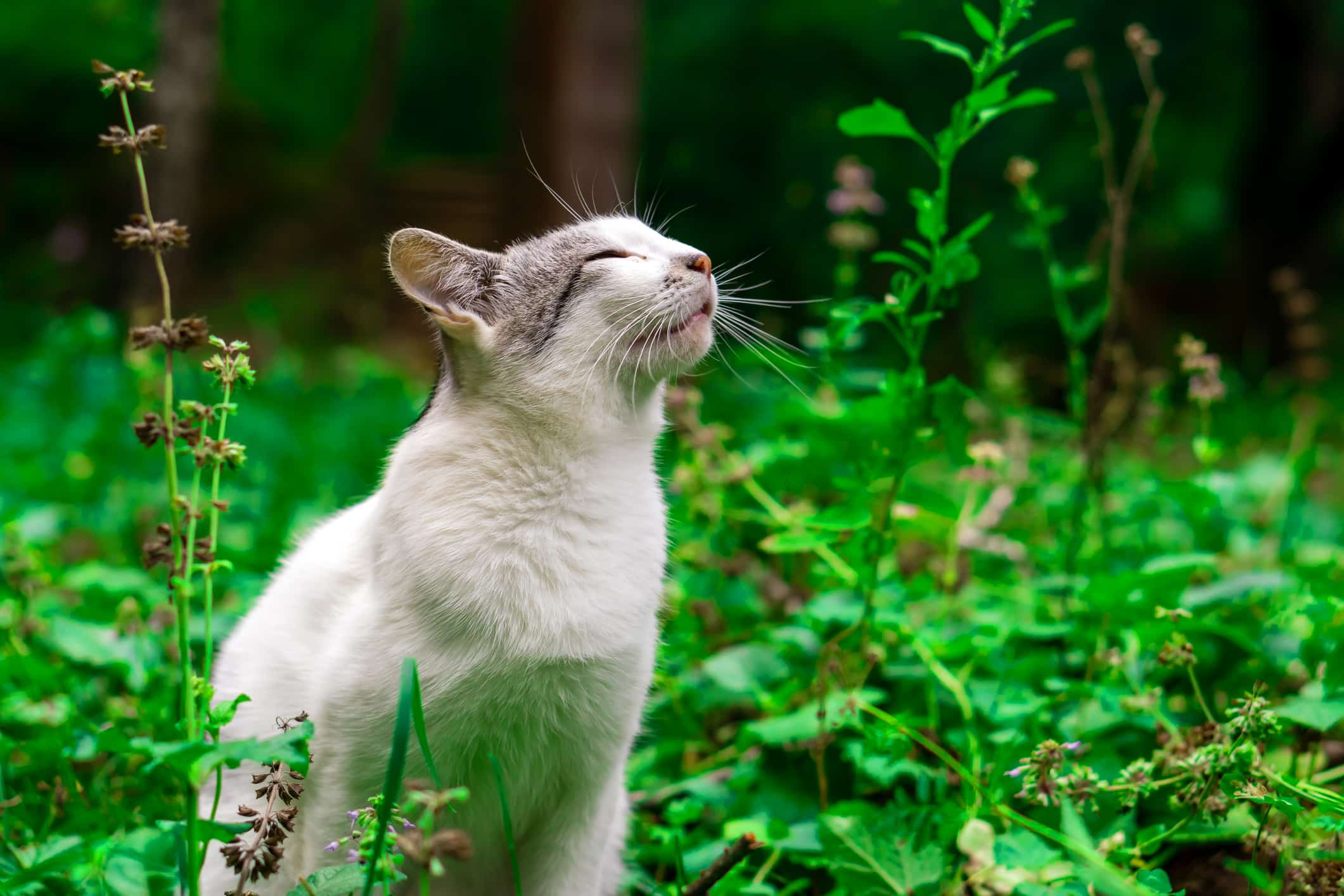
Unmasking the Mystery: Diagnostic Methods for Anosmia
Cats are fascinating creatures, navigating their world through a kaleidoscope of senses. But what happens when one of those senses, the powerful sense of smell, seems to be diminished? If you suspect your feline friend might be struggling with anosmia, the inability to smell, fret not! This section will delve into the diagnostic methods veterinarians employ to reach a diagnosis and ensure your cat receives the best possible care.
The Power of Observation: Physical Examination and Medical History
Your veterinarian plays a crucial role in unraveling the mystery behind your cat’s potential anosmia. The first step typically involves a comprehensive physical examination. During this exam, the veterinarian will meticulously assess your cat’s overall health, paying close attention to the ears, nose, and mouth.
- A Nose Knows: The veterinarian will examine your cat’s nasal passages for any signs of inflammation, discharge, or blockages that could be hindering their sense of smell.
- Seeing the Bigger Picture: In addition to the physical exam, the veterinarian will also review your cat’s medical history. This includes information about past illnesses, injuries, medications, and any recent changes in behavior or appetite.
By combining the findings from the physical examination with the insights gleaned from the medical history, the veterinarian can start to build a clearer picture of what might be affecting your cat’s sense of smell.
Sifting Through Possibilities: Ruling Out Other Culprits
Anosmia can sometimes mimic symptoms of other feline health concerns. To ensure an accurate diagnosis, the veterinarian will likely rule out some common culprits that could be causing similar issues.
- Dental Drama: Dental problems, such as gingivitis or stomatitis, can sometimes cause discomfort in the mouth or nasal cavity, leading to a decreased interest in food or changes in eating habits. These changes can be misinterpreted as a loss of smell.
- Upper Respiratory Rumble: Upper respiratory infections, often caused by viruses or bacteria, can cause nasal congestion and discharge. This congestion can temporarily impede a cat’s ability to smell, leading to a reduced appetite or changes in behavior.
By systematically ruling out these other possibilities, the veterinarian can narrow down the focus and determine if anosmia is indeed the underlying cause of your cat’s symptoms.
Advanced Tools for Complex Cases (Optional)
In some rare instances, the veterinarian might recommend additional diagnostic tools to gain a deeper understanding of the situation. It’s important to remember that these advanced tools are typically employed when the initial examination and history don’t provide a clear answer.
- A Peek Inside: Imaging techniques like X-rays or CT scans can offer a non-invasive way to visualize the nasal cavity and surrounding structures. This can help identify potential abnormalities, such as tumors or polyps, that could be impacting your cat’s sense of smell.
Working Together for a Diagnosis:
Throughout the diagnostic process, open communication with your veterinarian is key. Don’t hesitate to ask questions and share any observations you’ve made about your cat’s behavior. By working together as a team, you can unravel the mystery behind your cat’s anosmia and ensure they receive the appropriate treatment to help them return to their full, scent-filled world.
Addressing the Issue: Supporting Your Cat with Anosmia
If you suspect your feline friend might have a reduced sense of smell, also known as anosmia, it’s important to consult your veterinarian for a proper diagnosis. Anosmia can have various causes, and addressing the underlying issue whenever possible is the ideal course of action. This section will explore treatment options and strategies to support your cat’s well-being if they’re diagnosed with anosmia.
Treating the Underlying Cause: A Targeted Approach
The good news is that depending on the cause of your cat’s anosmia, there might be treatment options available to address the root of the problem. Here are some examples:
- Upper Respiratory Infections: If a temporary upper respiratory infection is causing your cat’s sniffles and a diminished sense of smell, your veterinarian might prescribe antibiotics or other medications to combat the infection. Once the infection clears, your cat’s sense of smell should return to normal.
- Nasal Polyps or Foreign Objects: In some cases, nasal polyps (benign growths) or even a foreign object lodged in the nasal cavity can obstruct airflow and impact smell. If this is suspected, your veterinarian might recommend surgical removal to restore normal nasal function.
- Dental Issues: Dental problems like severe gingivitis or dental abscesses can sometimes affect the nerves responsible for smell. Addressing these dental issues through professional cleaning or extractions might improve your cat’s sense of smell.
Remember: Early diagnosis and treatment of the underlying cause are crucial for optimal recovery. If you notice any signs that your cat might be struggling with smell, schedule a visit with your veterinarian for a thorough examination.
Supportive Care: Keeping Mealtimes Appealing
A diminished sense of smell can affect your cat’s appetite. After all, a significant part of the enjoyment of food comes from its aroma! Here are some ways you can make mealtimes more enticing for your cat with anosmia:
- Warming Up the Food: Heating up your cat’s wet food slightly can enhance the aroma and make it more appealing.
- Stronger-Smelling Options: Consider trying different brands or varieties of cat food with a richer, more robust aroma. Fish-based options or food formulated with strong-smelling ingredients might pique your cat’s interest.
- Adding a Flavor Boost: A tiny sprinkle of a flavor topper specifically formulated for cats can add an extra layer of enticement. Opt for toppers made with ingredients like bonito flakes or salmon oil, which are known to be cat attractants.
It’s important to note: While adding flavor toppers can be helpful, avoid using human seasonings or spices on your cat’s food, as some ingredients can be toxic to felines.
Environmental Enrichment: Engaging Other Senses
While a reduced sense of smell can be a challenge, there are ways to enrich your cat’s environment and stimulate their other senses. Here are some ideas:
- Interactive Playtime: Engage your cat in stimulating playtime sessions with interactive toys that make sounds or crinkle. This provides mental and physical stimulation and helps compensate for a diminished sense of smell.
- Food Puzzles: Food puzzles are a great way to encourage your cat to use their problem-solving skills while rewarding them with tasty treats. The focus on sight and touch can be enriching for a cat with anosmia.
- Feathery Fun: A classic feathery wand toy can provide endless entertainment for your feline friend. The visual movement and potential for pouncing satisfy your cat’s natural hunting instincts.
- Window Watching: Create a comfortable perch near a window where your cat can safely observe the world outside. The sights and sounds of birds or squirrels can provide hours of entertainment.
- Climbing Opportunities: Cats love to climb! Provide cat trees or shelves that allow your cat to explore different heights and vantage points.
By incorporating these strategies, you can create a stimulating and enriching environment for your cat, even with a reduced sense of smell.
Remember, a diagnosis of anosmia doesn’t have to diminish your cat’s quality of life. With veterinary guidance, supportive care measures, and environmental enrichment, you can ensure your feline companion continues to live a happy and fulfilling life.
Living with Anosmia: Supporting Your Feline Friend
Cats are fascinating creatures, navigating their world through a kaleidoscope of senses. But what happens when one of those senses, smell, diminishes or disappears entirely? This condition, known as anosmia, can affect felines just like it can humans. While a complete loss of smell can be a challenge, it doesn’t have to diminish your cat’s quality of life. With a few adjustments, a loving home, and a sprinkle of understanding, you can create a happy and fulfilling environment for your anosmic feline friend.
Routine and Consistency: The Pillars of Comfort
Cats are creatures of habit, and this is especially true for cats with anosmia. Their sense of smell plays a significant role in feeling secure and familiar with their surroundings. When this sense is compromised, establishing a consistent routine and environment becomes even more crucial.
- Predictable Schedule: Maintaining a predictable feeding schedule, playtime routine, and litter box location provides a sense of stability and comfort for your cat. They can rely on these familiar cues to navigate their world and feel safe.
- Environmental Enrichment: Since smell plays a part in the exploration of cats, consider enriching their environment with stimulating textures, sounds, and sights. Cat trees, scratching posts with different textures, and strategically placed toys can all help keep your cat engaged and mentally stimulated. Motivation – Mind – Success – Thinking – Productivity – Happiness
Enhanced Safety Measures: A Proactive Approach
A cat’s sense of smell not only helps them explore their environment but also plays a role in danger detection. For instance, they might use scent to identify potential hazards like spoiled food or poisonous plants. With anosmia, this crucial line of defense weakens. Here’s how you can be more proactive in keeping your cat safe:
- Indoor Living: Since their ability to detect dangers through smell might be compromised, consider keeping your anosmic cat indoors. This minimizes the risk of them encountering hazards outdoors, such as poisonous plants, aggressive animals, or busy streets. If you do allow supervised outdoor time, ensure it’s in a secure, enclosed catio or harness-and-leash walks.
- Close Supervision: Pay extra attention to your cat, especially when they’re exploring new areas. Keep an eye out for potential dangers and gently redirect them if they seem curious about something that could be harmful.
- Regular Veterinary Checkups: Schedule regular checkups with your veterinarian to ensure your cat’s overall health and well-being. Early detection of any potential health issues is crucial, especially since your cat might not be able to rely on scent-based warning signs.
Patience and Understanding: The Keys to a Happy Bond
Living with an anosmic cat requires an extra dose of patience and understanding. Here are some ways to strengthen your bond and create a positive environment:
- Positive Reinforcement: Reward your cat’s desired behaviors with treats, praise, or playtime. Positive reinforcement techniques can be highly effective in training and creating a happy relationship with your cat. Cat accessories on Amazon
- Focus on Other Senses: Since smell is diminished, focus on engaging your cat’s other senses. Play with toys that have interesting textures or crinkle sounds. Use food puzzles or interactive feeders to stimulate their mental abilities.
- Respect Their Boundaries: Anosmia can sometimes make cats feel more vulnerable. Be mindful of their body language and respect their need for space if they seem overwhelmed. A gentle head scratch or a calm voice can go a long way in building trust and affection.
Remember, cats with anosmia can still live happy and fulfilling lives. By creating a safe, stimulating environment, providing consistent routines, and showering them with love and understanding, you can become the best feline companion for your anosmic cat.
Other Interesting Articles
- How to Help Your Cat Overcome Fears in 13 Strategic Steps
- 13 Easy Tricks To Teach Your Cat: Basic Feline Training Guide
- How To Train Your Cat: 15 Easy Steps To Teach New Things
- Why Do Cats Have Tails? 4 Fun Facts You Didn’t Know
- 16 Simple Ways To Establish A Stronger Bond With Your Cat
- How To Train Your Cat/Kitten To Sit: Steps, Command, Guide
- Cat Giving Birth: From Your Feline Pregnancy to Kitten Care
- Fading Kitten Syndrome: Age, Causes, Symptoms, Treatment
- Kitten Bottle Feeding: Chart, Tips, Recipe, Challenges, Guide
- Cat Pregnancy: Timeline, Signs, Labor, Behavior, Stages
- 16 Silent Killers of Cats Every Pet Owner Must Be Aware Of
- Do Mother Cats Discipline Their Kittens? A Guide To Owners
- How To Take Care of A Kitten 6 Weeks Old: A 7-Step Guide
- How To Tell If Your Cat is Trying to Hurt You: A To-Do Guide
- How To Tell If Your Cat Has Tapeworms: What You Can Do
- How To Tell If My Cat is in Pain After Neutering: What To Do
- How To Get A Cat To Trust You Fast: Signs, Tips, Techniques
- 12 Signs Your Cat is a Boy: Tips To Distinguish A Male Cat
- Single Kitten Syndrome: Age, Signs, Symptoms, Treatments
- How To Tell If Your Cat Can’t See Well: What You Can Do
